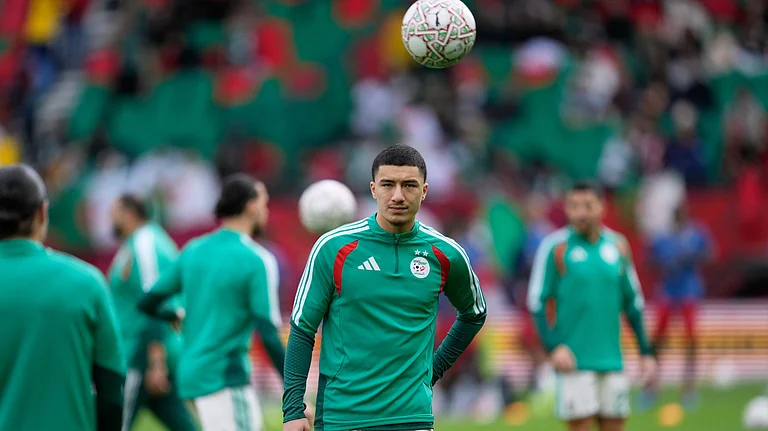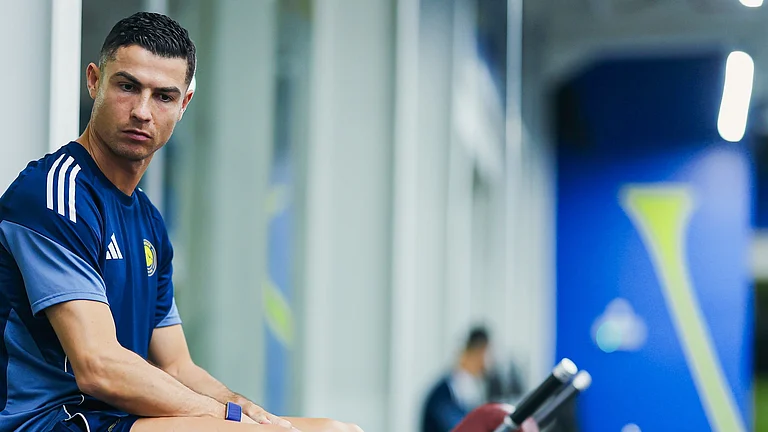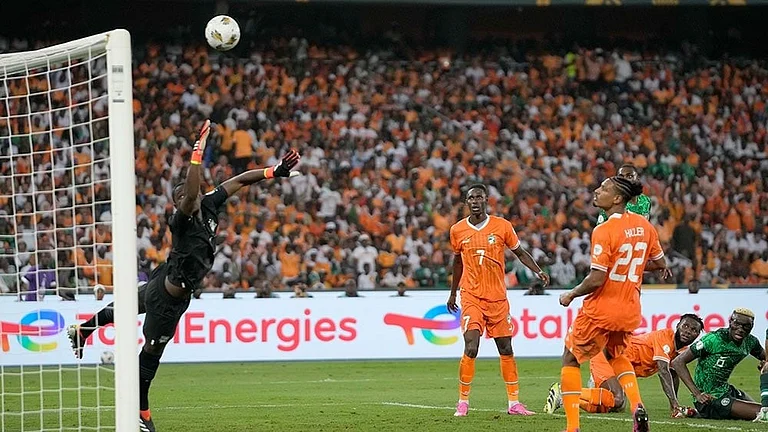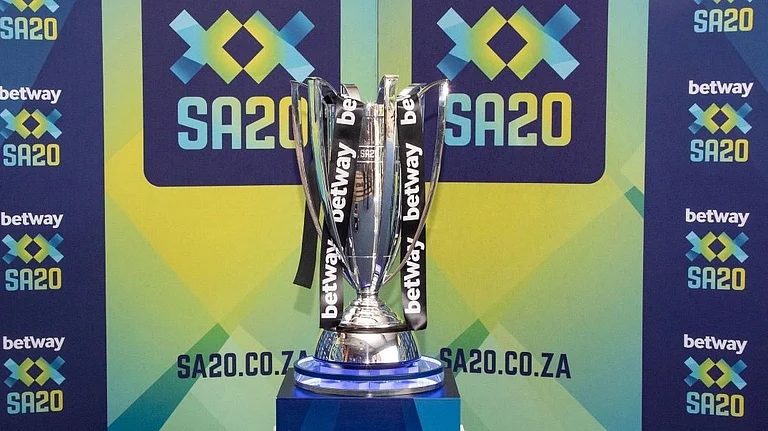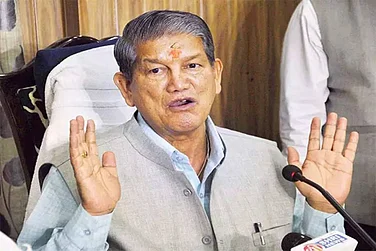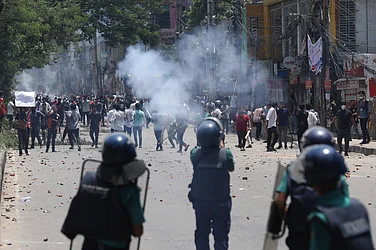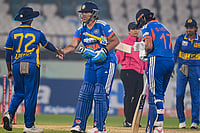A portrait of the 12th-century reformer-saint Basavanna, adorned with a crown atop a horse, takes a pride of place in most Lingayat households. He is depicted with a sword worn on his left side. The Lingayats venerate him as a deity and express their devotion by singing vachanas—philosophical verses that lay the foundation of Lingayatism.
“We do not believe in caste or creed. Basavanna asked us to earn and distribute. The principle of Dasoha means that we should not take the wage and keep it for ourselves,” says GB Patil, a prominent Lingayat leader from Jagatika Lingayat Mahasabha (JLM), a relatively new organisation but definitely gaining ground among Lingayats.
There, however, are other practices that do not depart from Hinduism. The Veerashaiva Lingayats, for example, consider Basavanna as one of the saints of Hinduism.
Whether or not the interpretation departs from Hinduism, the Lingayats, the largest community in Karnataka, have been a vote bank for the ruling Bharatiya Janata Party (BJP). But when the JLM, among other groups, presses for a minority status for the Lingayats, or for the recognition of Lingayatism as a separate religion, the demands did not sit well with the Sangh Parivar which works to preserve a unified ‘Hindu’ identity. Commenting on the matter, scholars and academicians say that a decades-long contradiction is at the centre of the community—demanding a separate religious status while also toeing the BJP line.

For the incumbent BJP to retain power in the upcoming Assembly elections, continued support of the community is crucial. The community constitutes 17 per cent of Karnataka’s population followed by Vokkaligas at 15 per cent, Muslims at 12.92 per cent and Brahmins at three per cent. The Other Backward Classes (OBCs) are believed to form 35 per cent of the state’s population while the Scheduled Castes (SCs) and Scheduled Tribes (STs) account for about 18 per cent. However, the official numbers can only be determined when the findings from the socio-economic and education survey that was commissioned in 2015 are released.
Of the 224 assembly constituencies in the state, as many as 100 are said to be dominated by the Lingayat community, mostly in north Karnataka. In a bid to woo the community, the BJP has recently approved increasing the reservation both for Vokkaligas and Lingayats by two per cent, while cancelling the 4 per cent OBC reservation for Muslims that they enjoyed under the 2B category.
For Vokkaligas, this will take the reservation from the existing four per cent to six per cent, and for the Lingayats, from five per cent to seven per cent. “But this is against Basavanna’s philosophy. The community did not ask to withdraw reservation for Muslims. The community will not want such a kind of reservation that takes the bread out of someone’s mouth,” says Patil, echoing the sentiments of many community members.
Paradoxical Relationship
The community’s long-standing demand for a minority status made some progress in 2018 when the Congress government, led by chief minister Siddaramaiah, agreed to recommend the demand to the central government. With the hope of bringing Lingayats into the Congress fold, Siddaramaiah asked which term—“Lingayat” or “Veerashaiva”—he should use in his recommendation letter as both names were interchangeably used. This stirred up an old debate within the community.
The essential difference between the Lingayats and the Veerashaivas is that the latter accept the Vedic texts and practices like caste and gender discrimination, while Basavanna not only protested these but offered an alternative to the Sanatana Dharma, according to writings of Gauri Lankesh, who was also a staunch supporter of the theory that the Lingayata tradition is separate from Hinduism.

Prominent community leaders like BJP-affiliated former chief minister Yediyurappa and Lingayat organisations like All India Veerashaiva Mahasabha (AIVM) opposed the campaign for a separate religion. They saw it as a government move to “break” the Hindu society and weaken the support base.
The rift can also be seen in the demands made by different organisations coming under the fold of this community. Amid sweltering heat at the beginning of March this year, a Lingayata Maha Adhiveshana was organised by the JLM to revive the demand for a separate religion status for the community. “More than one lakh people joined the convention. Politicians were not invited and even if they came, they were not allowed to come to the podium. The movement has been spreading fast since then,” says SM Jamdar, the principal general secretary of the JLM.
Internal Splits
The split within the community widened with the Panchamasali Lingayat, a dominant sub-sect of the Lingayat community and another vote bank of the BJP, demanding for an increase in reservation quota. Kudalasangama-based Lingayat Panchamasali Peetha Seer Basava Jaya Mrutyunjaya Swami, the seer of the Lingayat Panchamasali Peetha, asked the Panchamsali community to look for and elect those leaders who aim to give the community higher reservation and are willing to fight for it.
The Panchamasali sect leaders say that the number of their followers is between eight to ten million, whereas the Jangamas and Banajigas sub-sects estimate their numbers to be around four million and one million, respectively.
What started as an agitation against the government at Freedom Park in Bengaluru, ended two months later after the seer called off the stir as the government made the reservation announcement. He says that while they have accepted the government’s decision, they would continue to fight for higher reservation.
Many feel that there is not much ideological clarity among people in the rural areas. “If they see a Lingayat face as their leader, they will still vote for that party. But the development that the government has claimed to do has not reached the grassroots,” explains Mangala Kapparada, a member of the community. They can build a statue of Basavanna but are they really following his principles? she asks.
“Casteism continues to dominate society. But the truth is, the common people are just becoming scapegoats in what is a critical juncture of the political atmosphere,” she adds. Will the BJP be able to retain its support amidst corruption allegations, former chief minister Yediyurappa’s forceful removal from the top post and reservation demands that haven’t been allayed yet?
Which way will they sway?
“It is more about the community gravitating towards the BJP rather than the party doing something substantial for them,” says Mysuru-based political commentator Prithvi Datta Chandra Shobhi about the Lingayats continuing to back the ruling BJP.
Until 1989, the Lingayats stayed within the Congress fold. However, after Veerendra Patil (known for consolidating the Lingayat support for the Congress) was unceremoniously sacked by the then Congress president Rajiv Gandhi, the party failed to recover and faced a humiliating defeat in the 1994 elections.
Around the mid-2000s, Yediyurappa became a unifying force for the Lingayat community. With the anti-BJP coalition Janata Parivar in disarray, the community gradually shifted its allegiance towards the BJP. The turning point came in 2007 when former chief minister HD Kumaraswamy refused to hand over the reins of power to Yediyurappa. This created a rift between the Lingayat and Vokkaliga communities, and Yediyurappa gained from a sympathy wave, eventually becoming the chief minister in 2008. “His status in the Lingayat community should not be attributed only to what he did for the community but also to how the community thought he was being victimised,” says Prithvi.
The support to the party has always been the result of the extension of patronage to muttas, caste institutions, educational institutions and the businesses, he says, referring to visits of prominent politicians running to mathas that are visible in every corner of Karnataka.
“Whether it is accelerating the approval process for reservation or accommodating more people from the community by giving party tickets to people in North Karnataka, it has always been about the outreach to the community,” says Prithvi.
But the Lingayats are anything but a homogeneous group of people. With different sub-sects and their own interests, caste affiliations and demands, they would require patronage of people from diverse sectors and different ideological positions, to continue their support for the BJP. Now, with more prominent Lingayat leaders exiting the party’s fold, it remains to be seen how their paradoxical relationship with the community will change.
(This appeared in the print as "For Basavanna's Blessings")







